Unlike our USA counterparts in the early 90s, many children in Australia grew up playing the Atari 2600 or VCS and the Atari 7800. In 1990, Atari actually controlled 24% of the Australia console market! In 1990 it was 36% for Nintendo, 35% for Sega, and 24% Atari
North Americans must look at Aussies growing up in the late 80s and early 90s and think we were crazy.
Many kids in the 80s and early 90s in Australia actually received an Atari console as their first video game console. Often it was the 70s tech version too! Some kids got it brand new from a shop in the late 80s or 90s, others may of got a hand me down or second hand wood panel version. Either way they could save up their pocket money in 1990, walk into a shop and buy a new game for it.
Not only were some Aussie 90s kids playing the Atari 2600 in the 90s, I was one of those kids! It was technically my first console. One of my friends had got a NES in the early 90s, around 92/93, and their family kindly donated a Atari 2600 Jr to me. I’m not very nostalgic for it to be honest, but it’s just a fun fact that for some kids, including me, it was my first console. I also had a old Commodore 64 that I much preferred gaming on at the time, and it had better sound and graphics.
While the Nintendo Entertainment System was taking over North America in 1985, Aussies had to wait another 2 years for it to reach our shores. Then, we waited another 2 years for it to be affordable.
The video game crash of 83? What video game crash of 83?
Aussies, like our fellow Europeans, never stopped buying games. We heavily invested in video games through the early and mid-80s. We used popular microcomputers at the time, such as the Commodore 64.
We kept buying games. We also began investing in computers for our homes. The Atari 2600 continued to be sold brand new in shops here in Australia. This trend continued into the 1990’s.
We do need to put something into perspective here, first of all, the NES did not hit Australia until mid 1987, and it was expensive. The Sega Master System that actually was more popular than the NES, was also expensive and didn’t come out until early 1988.
Before the internet, Australia was quite isolated. If your parents took a direct interest in video games, they trusted the name Atari. It was something they grew up with.
A major recession hit Australia in the early 90s. Many people lost their jobs. People became much more careful in how they spent their money. This economic situation encouraged parents to buy Atari in the 1990s in Australia.
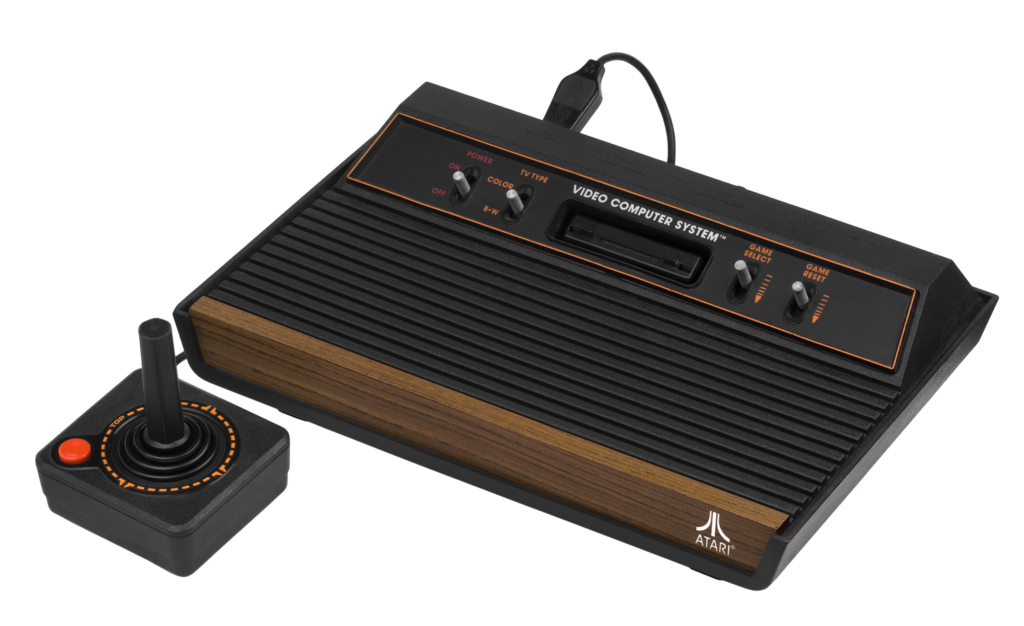
The Atari 2600 initially arrived in Australian shores in 1979. It is insane to think a 1979 console was still being sold in Australia in 1992. Like all game machines, this thing was quite expensive; it was $338 in 1979, which would be about $1960 today. It’s original name was the Atari Video Computer System or VCS. It came in a sleek 70s-style Wood Panel casing and used small joysticks and paddles for controllers.
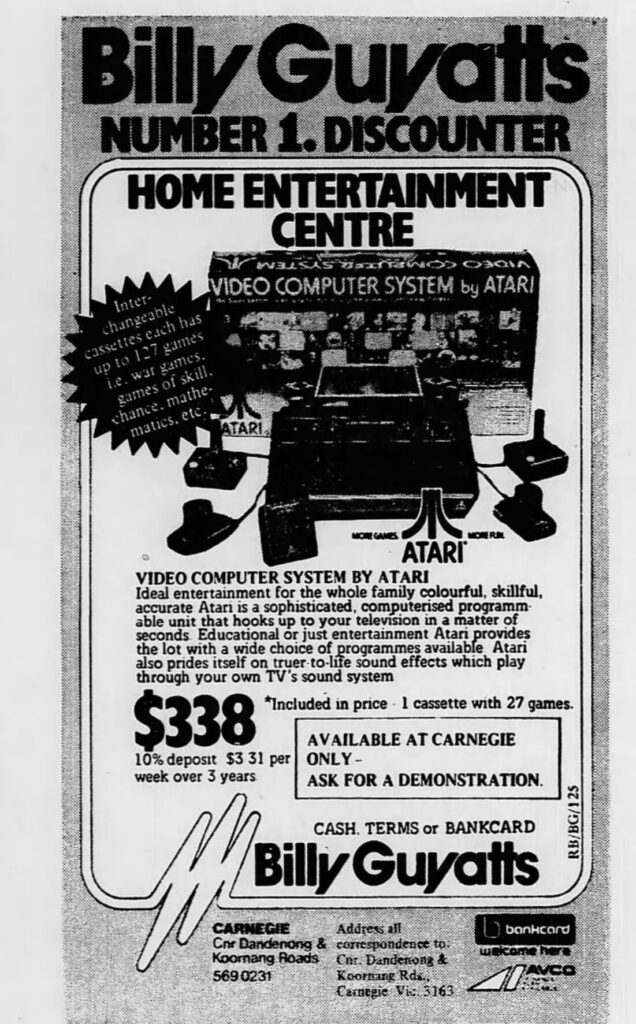

Like all game consoles back in the day, the cost of the console drops, and by 1984, the console now costs $199, with 6 games, this would be around $750 today, so in the mid 80s was still a premium console and luxury item, but on par with the console prices of today.
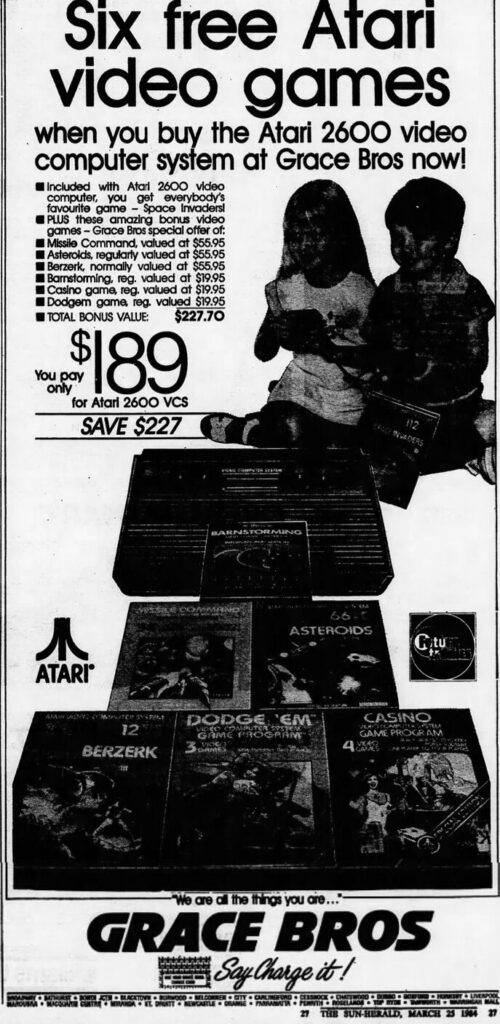
Now this is still cheaper than a computer, and an excellent option for kids. The major player and most popular gaming machine in 1984 in Australia was the Commodore 64, and this would set about $399 in 1984, or $1500 today. Keep in mind this did so much more than just play games like today’s computers, and this was the attraction for many people getting into games.
1986 see’s Australia’s video game market change. First the Atari 2600 drops to $129 ($420 today), with its main competition being the Intellivison, and Dick Smith Wizzard in the console space. However the NES drops in Australia the same year for $249 ($800 today), and the Master System within 6 months later for $199. Atari becomes the budget console for parents in the late 80s from this point.
1986 also see’s the Atari 2600 completely redesigned, and it becomes what many 90s Aussie kids remember it as. It drops the wooden panel design, and now looks like a modern console, coming in black with a silver panel down the centre. This model is known as the Atari 2600 Junior model.

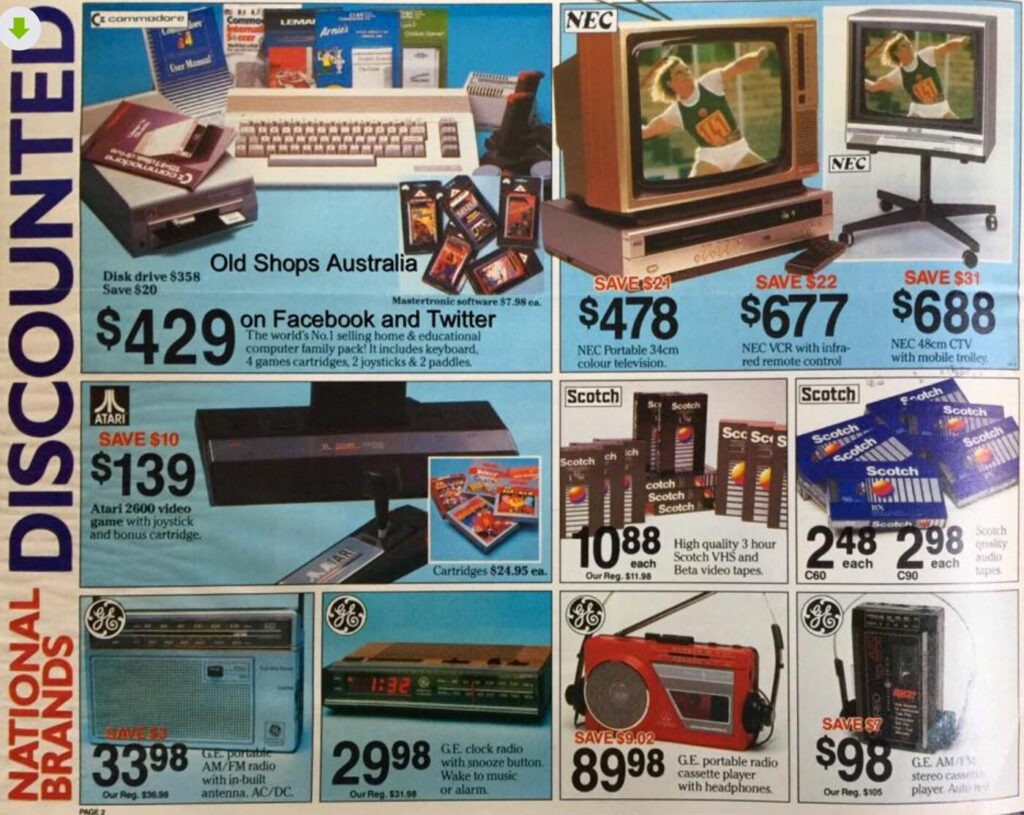
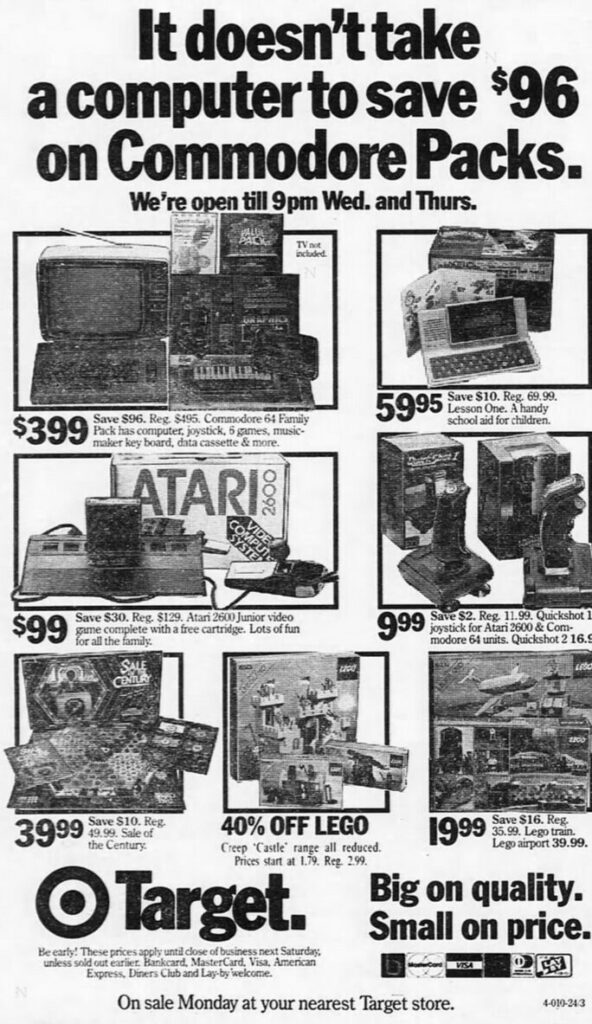
By 1989, its RRP is $99, and it is heavily supported with cheap multi-cart and game packs. For $29.95 you could get value packs with 4 games in 1989 ($80 today). In comparison a Nintendo NES game would cost $50-$60, and Sega Master System game would cost $40 and $80. Most Atari games for single carts were under $30.
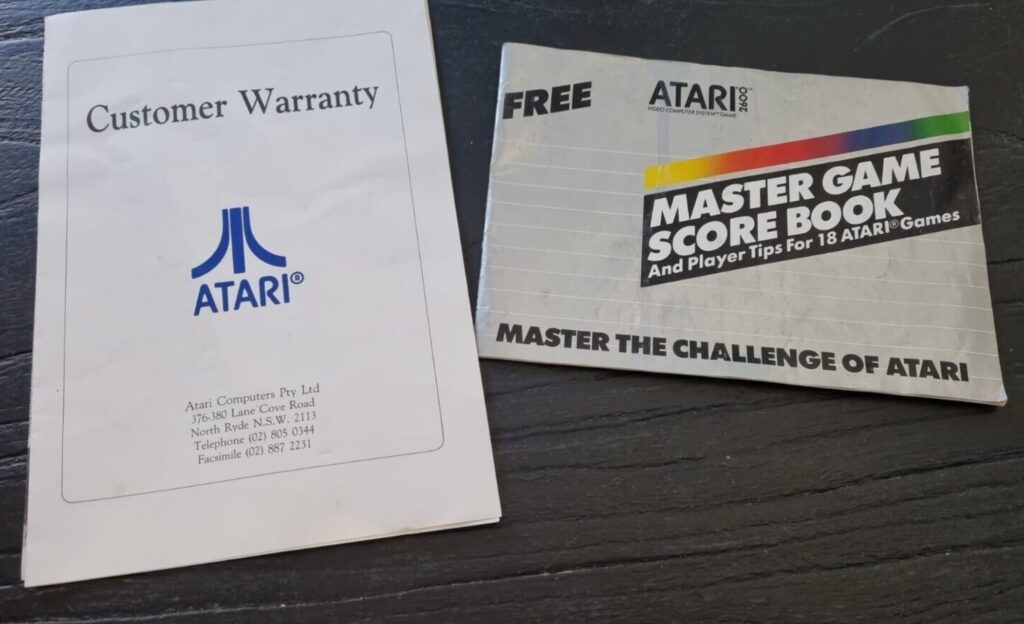
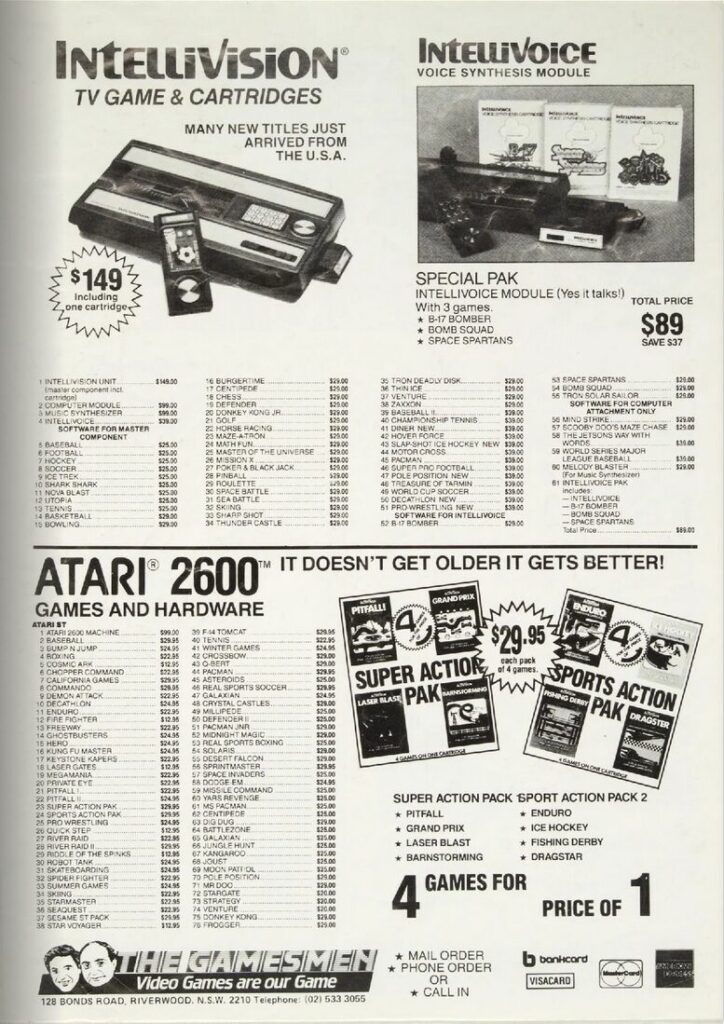
These multi cart packs play an important role in the late 80s and early 90s, as they were often bundled or sold very cheaply along side of the Atari 2600. It was cheap way to give a young child a game console and multiple games all in one hit.
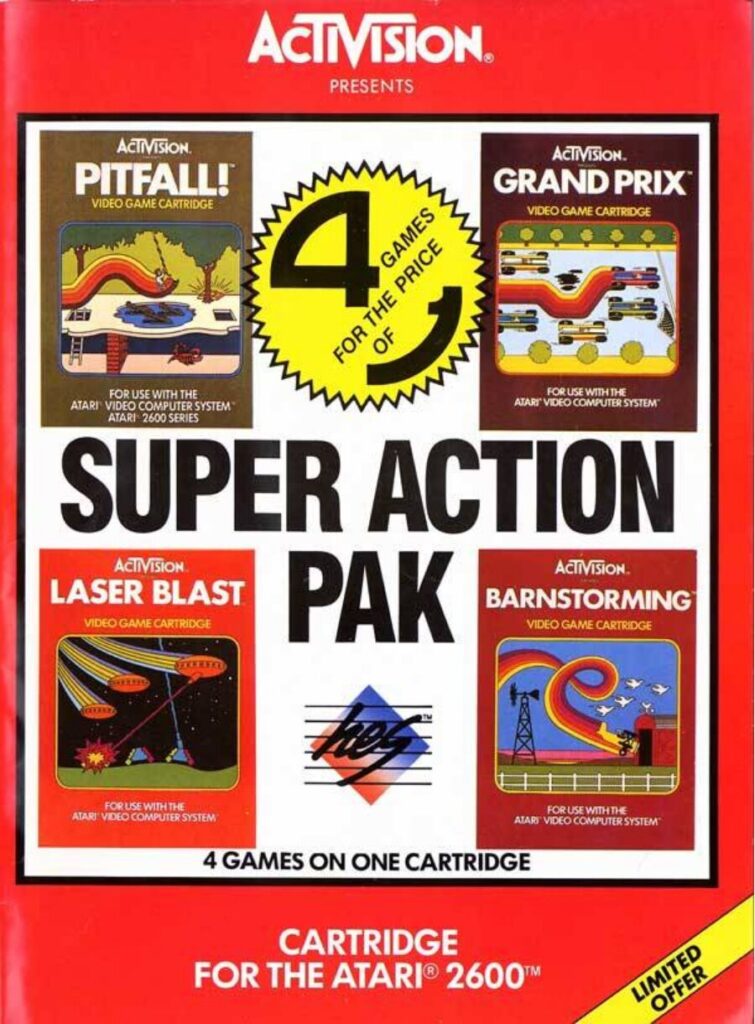
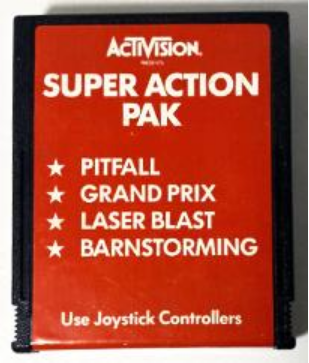
Many of the packs feature some of the best games on the system, made by the legendary first third party game developer ever, Activision, a name still well known in the video game industry today, known for the best selling Call Of Duty series.
The company behind these carts is also still around, if you have purchased an AFL or Rugby game in recent times, it was made by Blue Tongue Entertainment, a subsidiary of H.E.S, Home Entertainment Supplies.
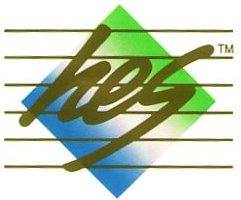
H.E.S. played an important part in selling the Atari 2600 in Australia; they also went on to play an important part in selling third-party controllers and accessories, and most 3rd party gear was sold by them, including big brands like Mad Catz in the late 90s.
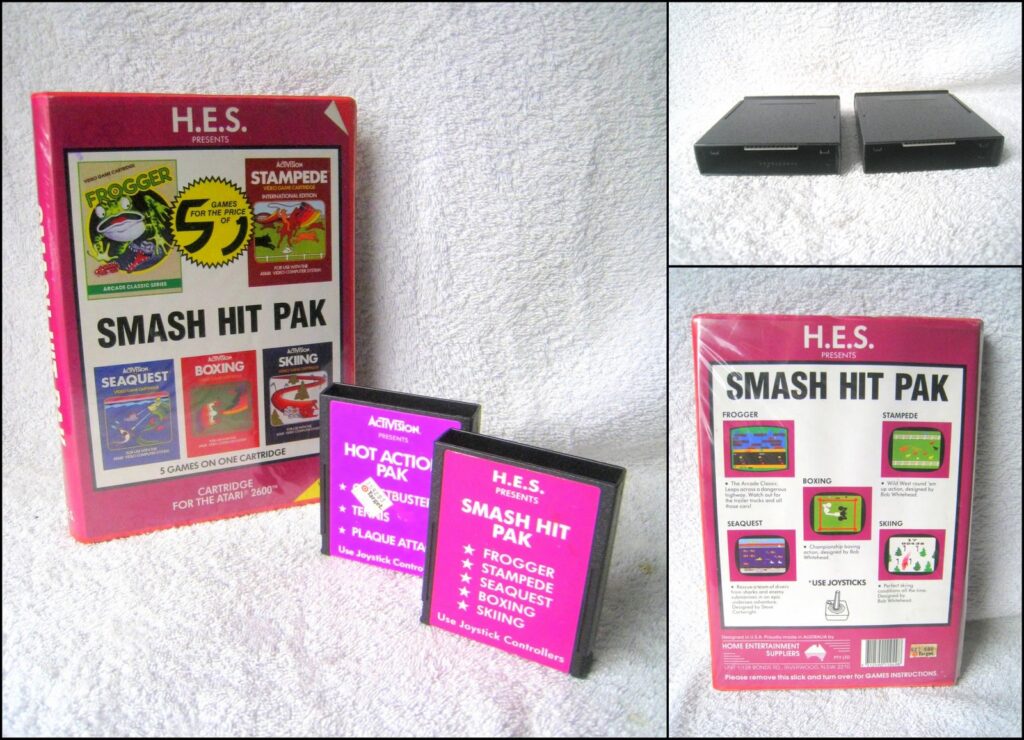
When the Sega Master System II comes out in 1990, it greatly outperforms the aging Atari 2600, and its RRP is on $99.
The Atari 2600 drops to $50. The H.E.S Game Paks are often the first purchases with the system.
1990 also see’s Atari release a high end budget machine for the Australian market, the Atari 7800 for around $137 vs the NES $249 and Master System II $99. For some kids, this is their first console growing up, the biggest feature of the 7800 apart from the improved graphics, is that its backwards compatible with dirt cheap and old 2600 games.
The 7800 is inferior in most ways compared to the NES and Master System, although a solid system with a poor sound chip.
Atari Australia also cashed in on the popularity of Mario in the early 90s, and made sure to feature old Mario Bros games in their commercials from old licensing deals.
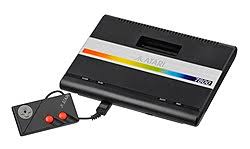
The 1990s also see’s Atari move from including an old joystick and bundling in modern gamepad in 5200, that is the standard pad for the 7800.
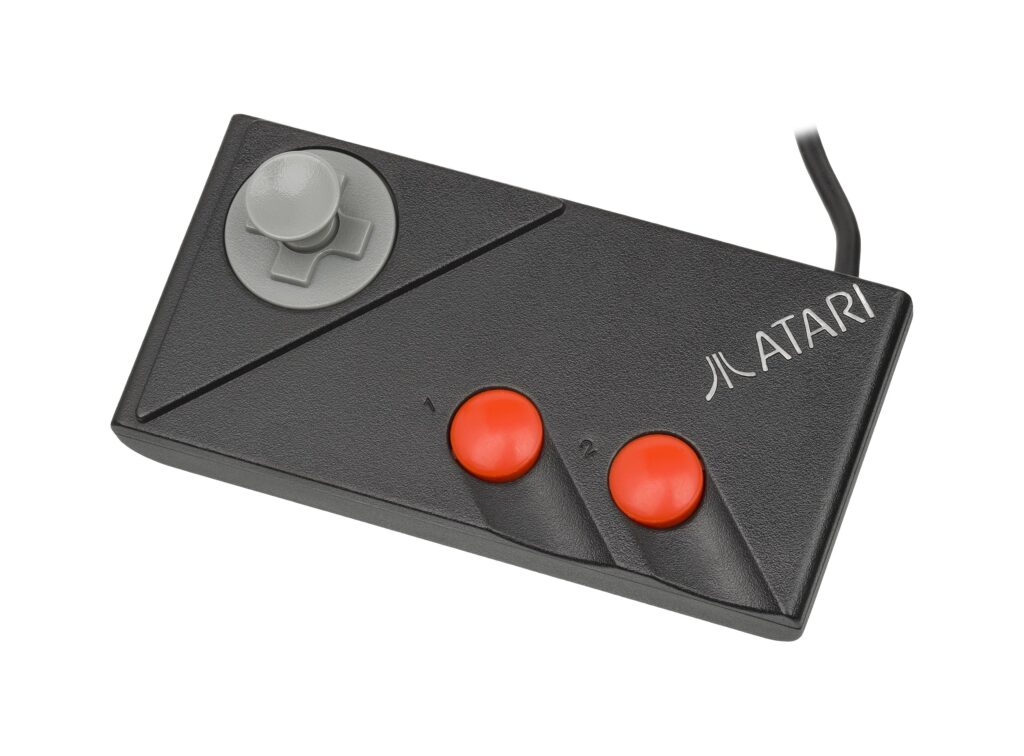
By 1992, Atari Australia is selling a 32 game packs and 2 controllers for around $68, or console packs for $49, with it being pushed a “Recession Buster”, and cheap console to buy while people are struggling with money or scared to spend it. The Atari 7800 also drops to $99 in 1992.
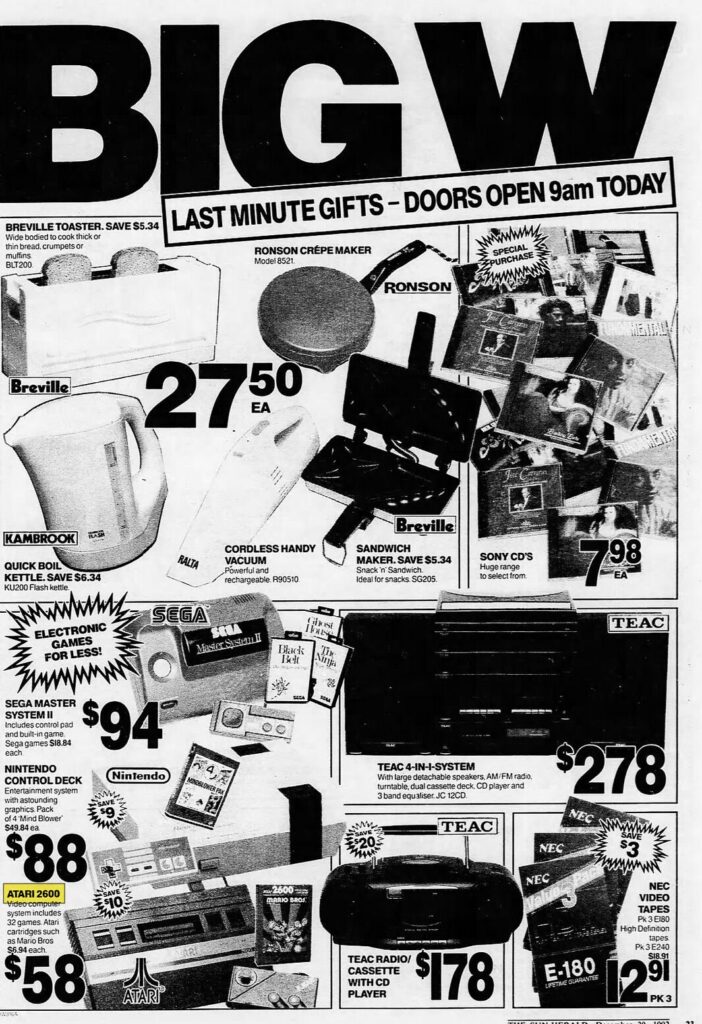
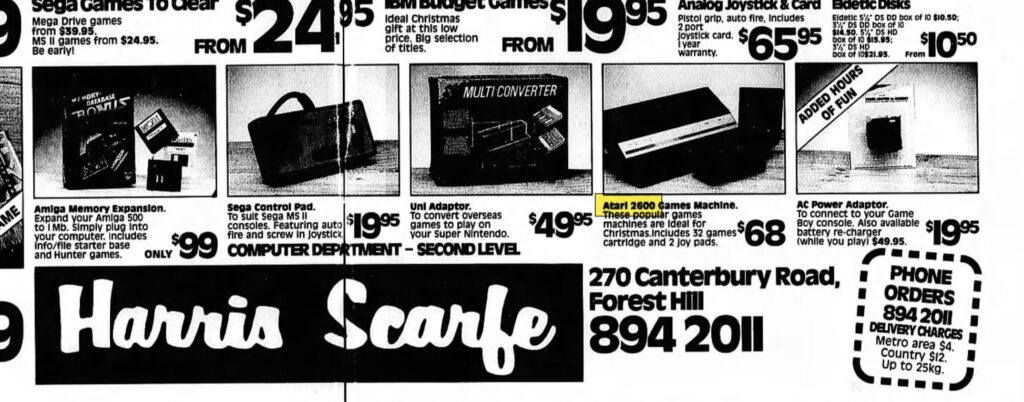
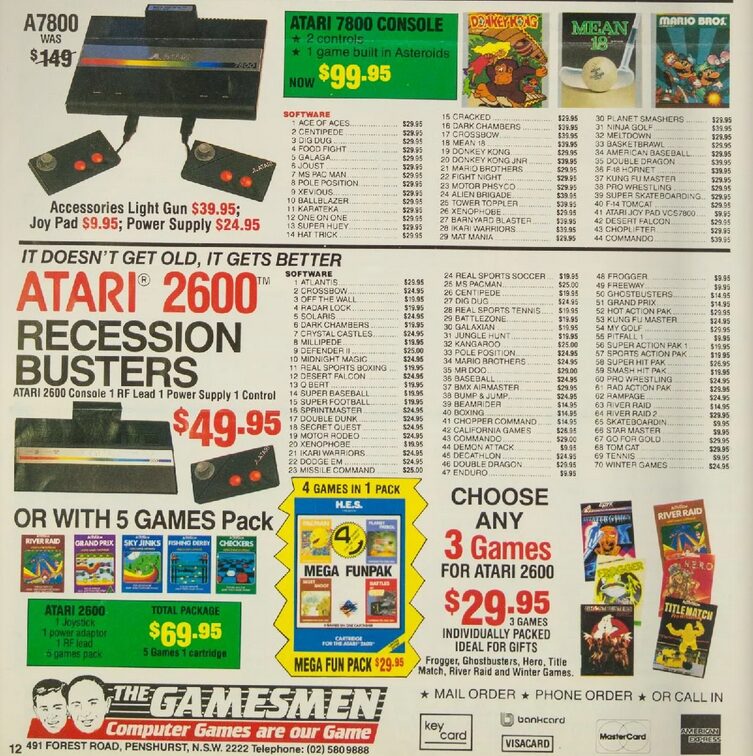
Atari 2600 and 7800 consoles are discontinued by the end of 1993, as Atari prepare to launch a proper modern system, the Atari Jaguar. Byt 1993, Atari only holds 8% of the video game market in Australia (this includes the failed but modern Atari Lynx).
Atari Australia closes down in April 1994, and Atari pulls out of the Australian market. The Jaguar never officially releases here, and is just imported here from overseas.
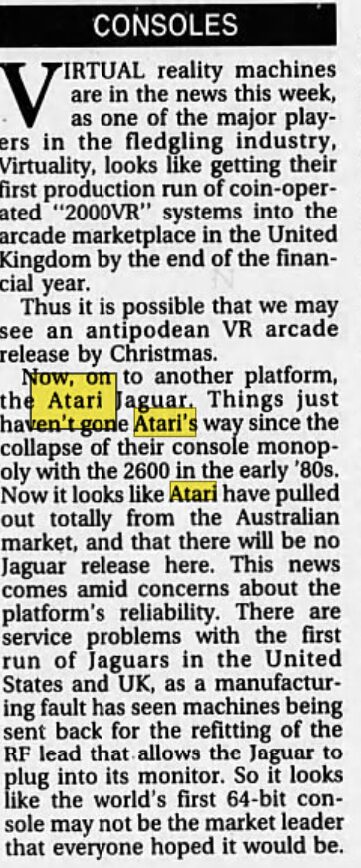
H.E.S. go on to buy the last of Atari’s inventory in Australia, which is mainly Atari Lynxs, and goes on to officially distribute the Lynx in Australia as a cheap budget alternative to the Game Boy. Once again, H.E.S. play a part in the late life cycle of an Atari product.
Oddly Atari comes back to the Aussie market in 2003 as a software company when it takes over Sega Australia….kinda. Sega sold off its control to Sega Ozisoft after the Dreamcast failed in Australia 1999.
Infogrames takes over half of Ozisoft in 2002 and renames the company Infogrames Australia Pty Ltd. It then changes the name again when it acquires the Atari name in 2003, to Atari Australia Pty Ltd.
In 2008 it changes again to Namco Bandai Partners Australia Pty, Ltd. due to the merger of Bandai and Atari.
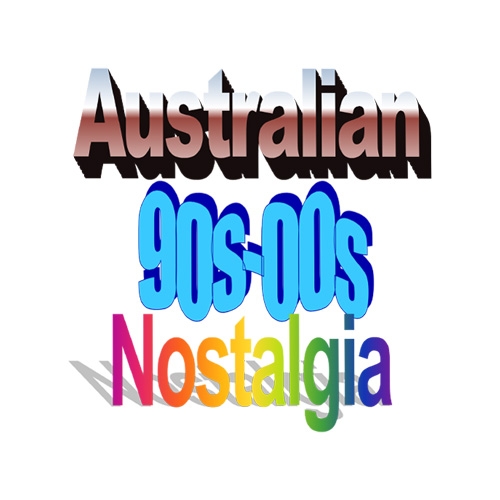
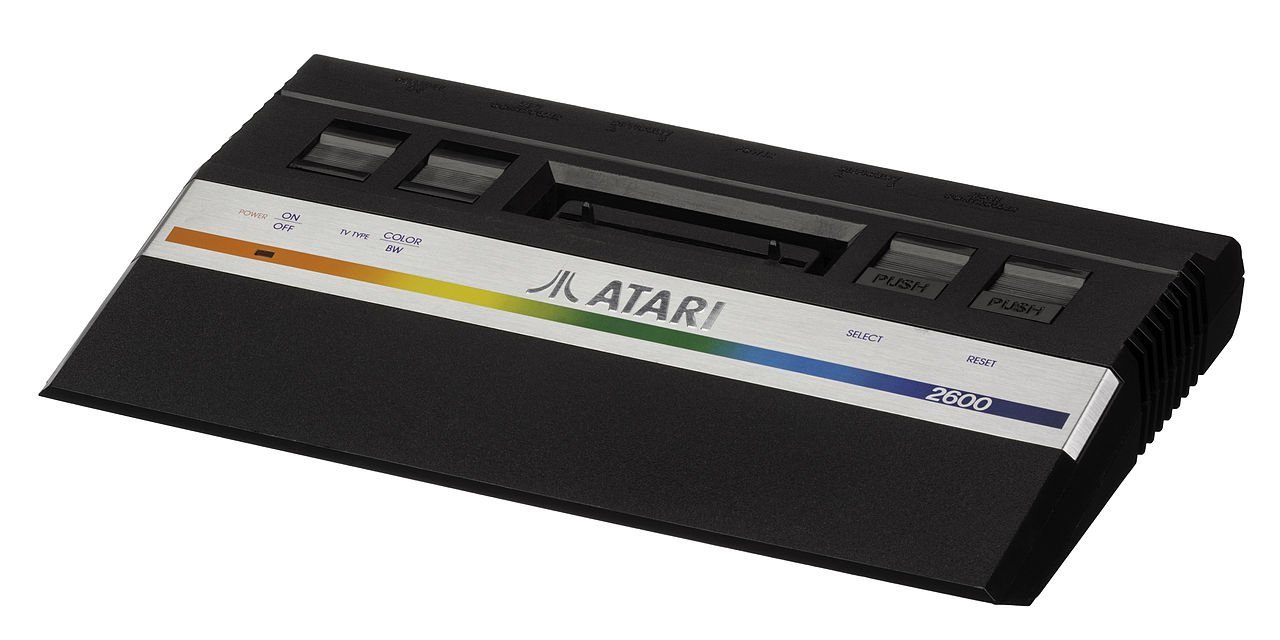
Leave a Reply